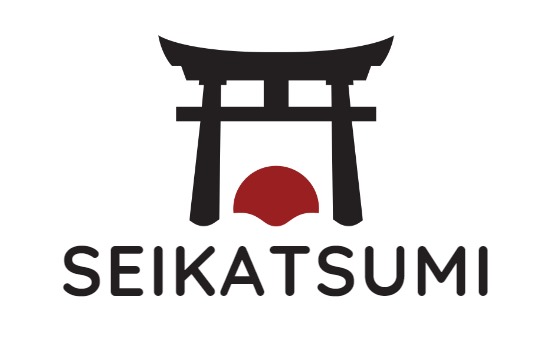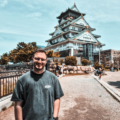Kyoto is a city that is steeped in tradition, beauty, and culture. It is a place that is known for its stunning temples, shrines, and gardens, but it is also a city that is home to some of the best coffee shops in Japan. As a coffee lover, I was excited to explore the coffee scene in Kyoto and discover the unique blends and brewing methods that make Kyoto coffee stand out.

One of the things that make Kyoto coffee unique is the attention to detail and the emphasis on quality. Many coffee shops in Kyoto use locally sourced beans and roast them in-house to ensure that they are fresh and full of flavor. The brewing methods used in Kyoto coffee shops are also unique, with many shops using traditional Japanese methods like pour-over and siphon brewing to create a rich and complex cup of coffee. Whether you are a coffee connoisseur or simply looking for a delicious and unique coffee experience, Kyoto’s coffee scene is sure to impress.
History of Kyoto Coffee

As a coffee lover, I have always been fascinated by the rich history of coffee and how it has evolved over the years. One particular style of coffee that has caught my attention is Kyoto coffee. In this section, I will take you through the history of Kyoto coffee, from its origins to its influence on Japanese coffee culture.
Origins and Evolution
Kyoto coffee, also known as Kyoto-style coffee or slow-drip coffee, has its origins in Japan. The Japanese have a long history of tea culture, but coffee was introduced to Japan in the 17th century by Dutch traders. However, it wasn’t until the Edo period (1603-1868) that coffee consumption began gaining popularity in Japan.
The Kyoto-style of coffee brewing originated in the 19th century, during the Meiji period (1868-1912). It was during this time that Kyoto coffee shops began experimenting with a new method of slow-drip coffee brewing. This process involved dripping ice-cold water over coffee grounds, one drop at a time, resulting in a smooth and mellow coffee flavor.
Over time, the Kyoto-style of coffee brewing evolved, with coffee shops in Kyoto experimenting with different techniques and equipment to perfect their slow-drip coffee. Today, Kyoto-style coffee is known for its unique flavor profile, which is achieved through the slow and steady extraction process.
Influence on Japanese Coffee Culture
Kyoto-style coffee has had a significant influence on Japanese coffee culture. The slow-drip method of coffee brewing has become synonymous with Japanese coffee culture, and many coffee shops in Japan have adopted this method of coffee brewing.
Today, Kyoto-style coffee is not only popular in Japan but has also gained popularity worldwide. Many coffee shops around the world have adopted the slow-drip method of coffee brewing, and Kyoto-style coffee equipment is widely available.
In conclusion, the history of Kyoto coffee is a fascinating one, from its origins in Japan to its influence on Japanese coffee culture. The slow-drip method of coffee brewing has become synonymous with Kyoto-style coffee, and its unique flavor profile has made it a favorite among coffee lovers worldwide.
Hey you! Are you interested in more food? Then be sure to check out our top food articles! You definitely can’t miss it!
Japanese Kawaii Food: Perfect Guide to Cute and Delicious Japanese Cuisine 2024
Low Carb Japanese Food 2024: The Best Guide for Delicious and Healthy Food
Japanese Bento Box: Your Guide Preparing The Best Bento Box In 2024!
Kyoto Coffee Scene

As a coffee lover, I am excited to share my experience of the Kyoto coffee scene. Kyoto is a city that is famous for its traditional tea ceremonies, but it has also become a hub for coffee enthusiasts. In this section, I will discuss the famous Kyoto cafes and the local coffee roasting techniques that make Kyoto coffee unique.
Famous Kyoto Cafes
Kyoto is home to several famous cafes that have gained popularity among locals and tourists alike. One of the most popular cafes in Kyoto is %ARABICA, which is known for its iconic coffee cups and is considered the heart of Japan’s third wave coffee scene. The cafe has several locations in Kyoto, including Arashiyama and Higashiyama, and is always busy due to its popularity.
Another famous cafe in Kyoto is Blue Bottle Coffee Kyoto Cafe. It is a globally recognized coffee shop that offers a unique experience for coffee enthusiasts. With an emphasis on precision brewing methods, each cup of coffee is crafted to perfection. The cafe provides a modern and stylish setting where customers can savor their beverages.
Local Coffee Roasting Techniques
Kyoto has its unique coffee roasting techniques that make its coffee stand out from the rest. The city’s coffee scene is a reflection of the city itself – a beautiful and complex blend of flavors and culture. One of the most popular techniques used in Kyoto is the Kyoto-style slow drip method. This method involves slowly dripping hot water over the coffee grounds, resulting in a smooth and rich flavor.
Another technique used in Kyoto is the charcoal roasting method. This method involves roasting the coffee beans over charcoal, resulting in a unique smoky flavor. The method is time-consuming and requires a lot of skill, but it is worth the effort as it produces a distinct flavor that cannot be replicated.
In conclusion, the Kyoto coffee scene is a must-visit for any coffee enthusiast. With its famous cafes and unique coffee roasting techniques, Kyoto coffee is a reflection of the city’s culture and tradition.
Kyoto Coffee Brewing Methods

As a coffee lover, I am always on the lookout for new and exciting ways to brew coffee. Kyoto coffee is a unique method that has been gaining popularity in recent years. It is a slow-drip brewing process that produces a smooth, rich, and flavorful coffee. In this section, I will discuss two popular Kyoto coffee brewing methods: Kyoto-Style Cold Brew and Siphon Coffee Brewing.
Kyoto-Style Cold Brew
Kyoto-Style Cold Brew is a slow-drip method that involves dripping ice-cold water onto coffee grounds for several hours. The process can take anywhere from 12 to 24 hours, depending on the desired strength of the coffee. The result is a smooth, sweet, and low-acidic coffee that is perfect for iced coffee.
To make Kyoto-Style Cold Brew, you will need a Kyoto-style drip tower, which is a beautiful glass contraption that resembles a chemistry lab apparatus. The drip tower consists of three parts: the top chamber, the middle chamber, and the bottom chamber. The top chamber is where you add ice-cold water, and the middle chamber is where you place the coffee grounds. The bottom chamber is where the coffee drips into.
Siphon Coffee Brewing
Siphon Coffee Brewing is a unique brewing method that uses a vacuum to extract the coffee’s flavor. It is a complex process that involves heating water in a bottom chamber, which then rises to the top chamber, where it mixes with coffee grounds. The resulting coffee is then drawn back down to the bottom chamber through a filter.
Siphon Coffee Brewing produces a clean and flavorful coffee that is perfect for those who prefer a lighter coffee. The process is also visually appealing, as the brewing apparatus resembles a science experiment.
In conclusion, Kyoto coffee brewing methods are a unique and exciting way to brew coffee. Whether you prefer a smooth and sweet iced coffee or a light and flavorful hot coffee, there is a Kyoto coffee brewing method that will suit your taste.
Exploring Kyoto Coffee Flavors

As a coffee lover, I’m always on the hunt for new and exciting flavors to try. Kyoto is a city that’s known for its rich coffee culture, and there’s no shortage of unique and delicious blends to explore. In this section, I’ll share some of my favorite Kyoto coffee flavors and how to pair them with traditional sweets.
Tasting Notes
Kyoto coffee is characterized by its smooth, rich flavor and low acidity. One of my favorite blends is the Kyoto-style iced coffee, which is brewed using a slow drip method that results in a clean and crisp taste. The coffee is typically served black, but you can add a splash of cream or sugar if you prefer.
Another popular Kyoto coffee flavor is the matcha latte, which combines the earthy taste of matcha green tea with creamy milk and a shot of espresso. The result is a sweet and slightly bitter drink that’s perfect for a mid-afternoon pick-me-up.
For those who prefer a more traditional coffee flavor, the Kyoto-style pour-over coffee is a must-try. This brewing method involves pouring hot water over coffee grounds in a slow and steady stream, resulting in a rich and full-bodied flavor.
Pairing with Traditional Sweets
In Kyoto, coffee is often paired with traditional Japanese sweets like mochi and wagashi. These sweets are typically made with ingredients like sweet bean paste, rice flour, and fruit, and they’re the perfect complement to the smooth and rich flavors of Kyoto coffee.
One of my favorite pairings is a matcha latte with a sweet and chewy mochi ball. The bitterness of the matcha is balanced perfectly by the sweet and slightly nutty flavor of the mochi, creating a delicious and satisfying treat.
If you prefer a more savory flavor, try pairing a Kyoto-style pour-over coffee with a sweet and salty senbei rice cracker. The bold flavor of the coffee is enhanced by the crunchy texture and savory taste of the senbei, creating a unique and delicious pairing.
Overall, Kyoto coffee is a must-try for any coffee lover. With its unique flavors and rich cultural history, it’s no wonder that Kyoto is known as one of the best coffee cities in the world.
Frequently Asked Questions
What is Kyoto Coffee?
Kyoto Coffee typically refers to Kyoto-style cold brew, a slow drip method of brewing coffee that originated in Kyoto, Japan.
How is Kyoto Coffee different from regular coffee?
Kyoto Coffee distinguishes itself through its unique brewing process, involving a slow drip of cold water over coffee grounds over an extended period, resulting in a smooth and nuanced flavor profile.
Can I make Kyoto Coffee at home?
Yes, you can make Kyoto Coffee at home with a Kyoto-style cold brew tower or a DIY drip system. Simply set up the apparatus, add coffee grounds and cold water, and allow the slow drip process to work its magic over 12-24 hours.
If you liked this blog article about kyoto coffee, don’t forget to follow us on Pinterest so you don’t miss any more tips.
Let us know, which of the above is your favorite coffe in kyoto!






